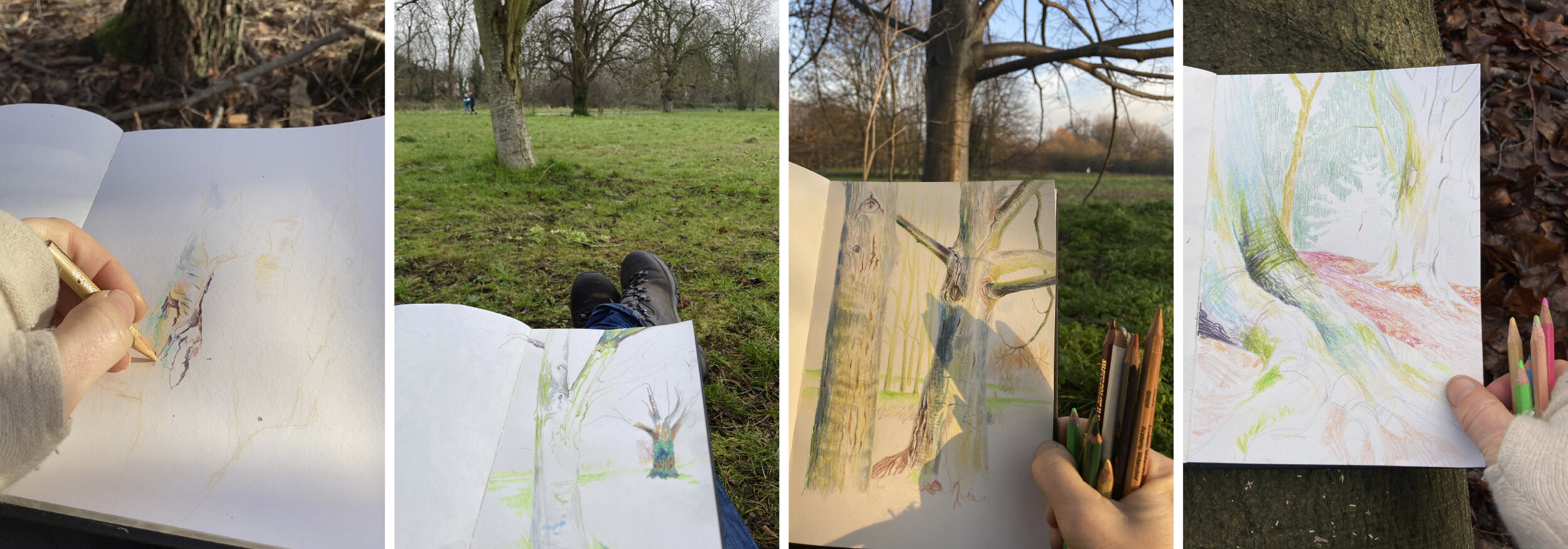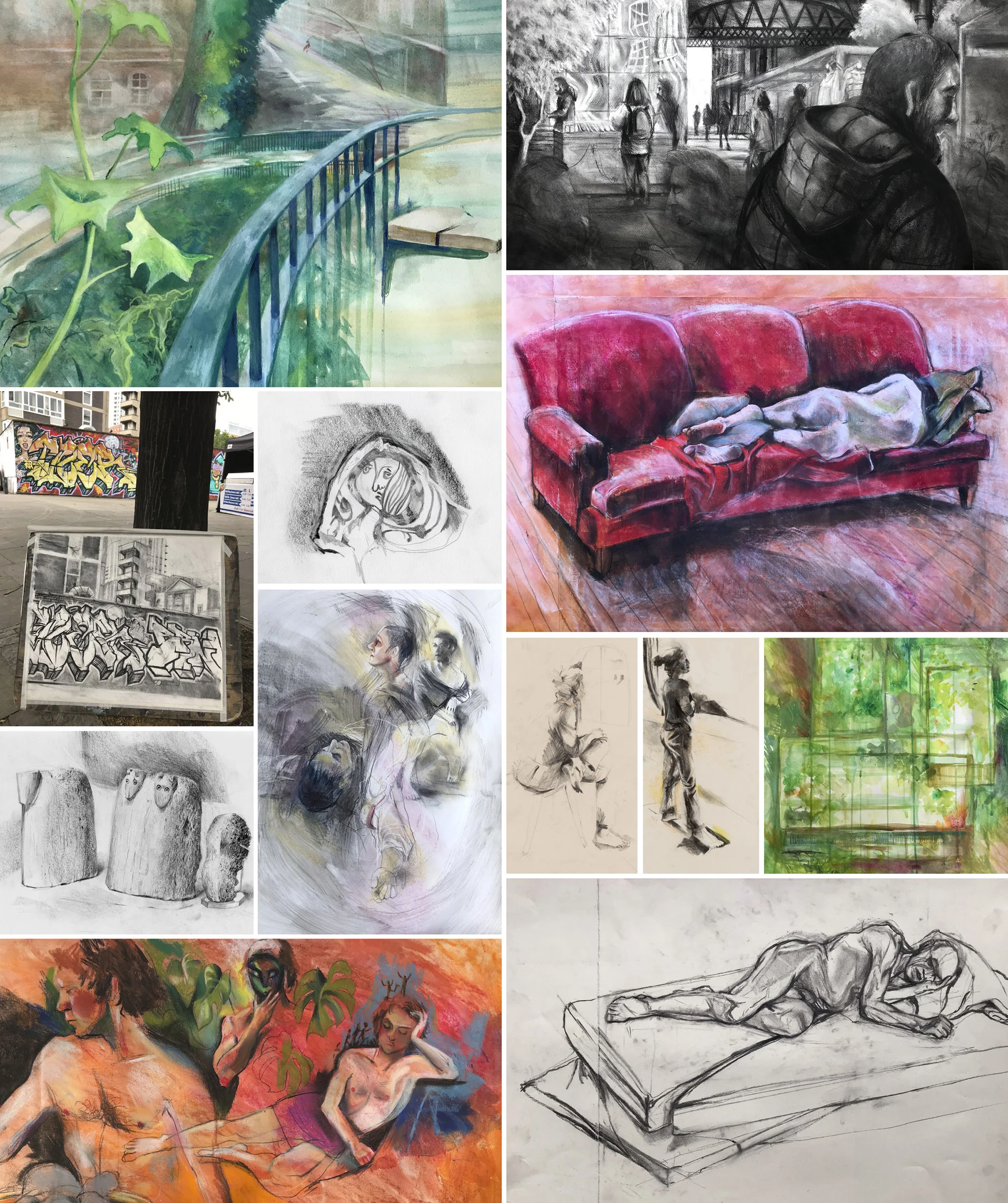The highest value pair of stamps give prominence to the Lundy Field Society founders - Martin Coles Harman who was president between 1946 & 1954, and Leslie A Harvey, secretary from 1946 to 1959. Running behind these portraits across both stamps is the landscape looking North towards Old Light, where the Field Society made their headquarters for many of the early years. This vista was already very familiar to me as back in 2015 I had sat in that landscape and made a watercolour & ink painting in my sketchbook.
Watercolour and ink sketchbook painting, made in situ during April 2015
Although this view is often dotted with sheep from Lundy’s farm, Lars asked for me to include just Soay sheep in this artwork. Soay, originating in St. Kilda and the most primitive domestic sheep in Europe, were introduced to Lundy in 1942 by Martin Coles Harman. In reality the population live further up the island, North of quarter wall, but for creative purposes I moved them south of Old Light.
L to R: My daughter tending an orphaned Soay lamb in 2016; a few of my sketches using my own photographs as source material
I draw a lot of portraits, preferably from life, but also from photographs, and since March 2020 live online. For making a likeness of Harvey I only had one sketch by artist John Dyke available to work from. I was asked to portray Harvey at more of a 3/4 viewpoint than this sketch and minus the pipe!
L to R: Dyke’s Sketch of Leslie A Harvey; 3 of my pencil sketches; drawing in sepia ink made with brush and dip pen
A small number of photographs exist of Harman, and I was immediately drawn to him as an older man, complete with double chin and wonderful bushy eyebrows! The aim however was to show him as he would have looked when the Field Society was founded, so I reverted to images of him as a much younger man. I made both the final portraits using sepia ink and drawing with a dip pen over diluted ink washes. In the end the ink was too bright so I used photoshop to tone down the colour on the digital files.
L to R: A stamp already featuring Martin Coles Martin; 3 sketches of him at different ages; final drawing in sepia ink made with brush and dip pen
Although composed in black and white as one image, I quickly decided to paint the 2 portraits and the landscape separately and put them together in Adobe Indesign. The main reason was that I wanted to paint the landscape uninhibited, using broad strokes of watercolour paint across the whole page, but working this way also enabled me to tweak the size and position of the portrait ovals as well as adding a defined, even line around each.
Final design in black and white
Details from the landscape painting
All the individual elements back together again in the final design






































